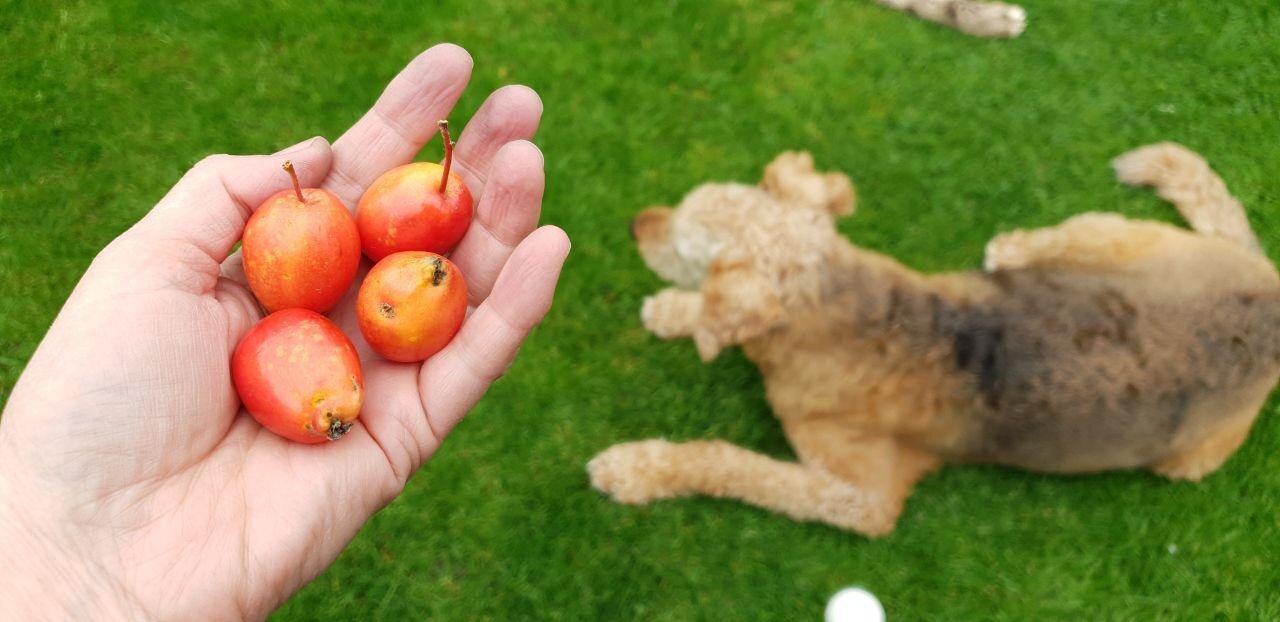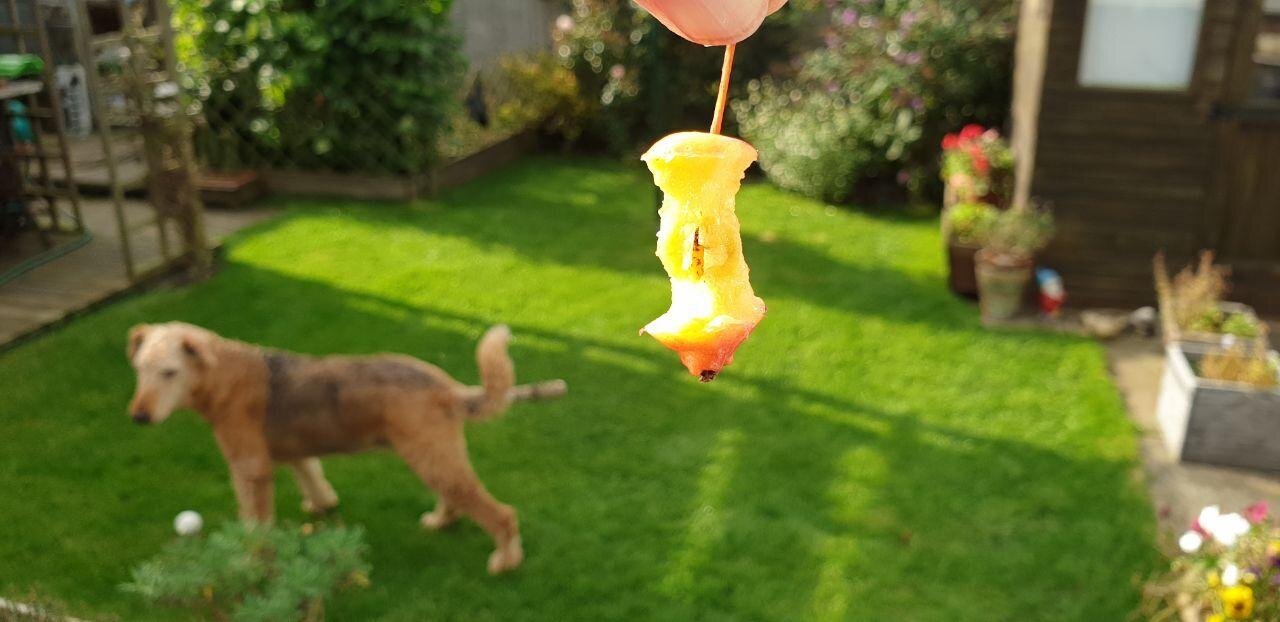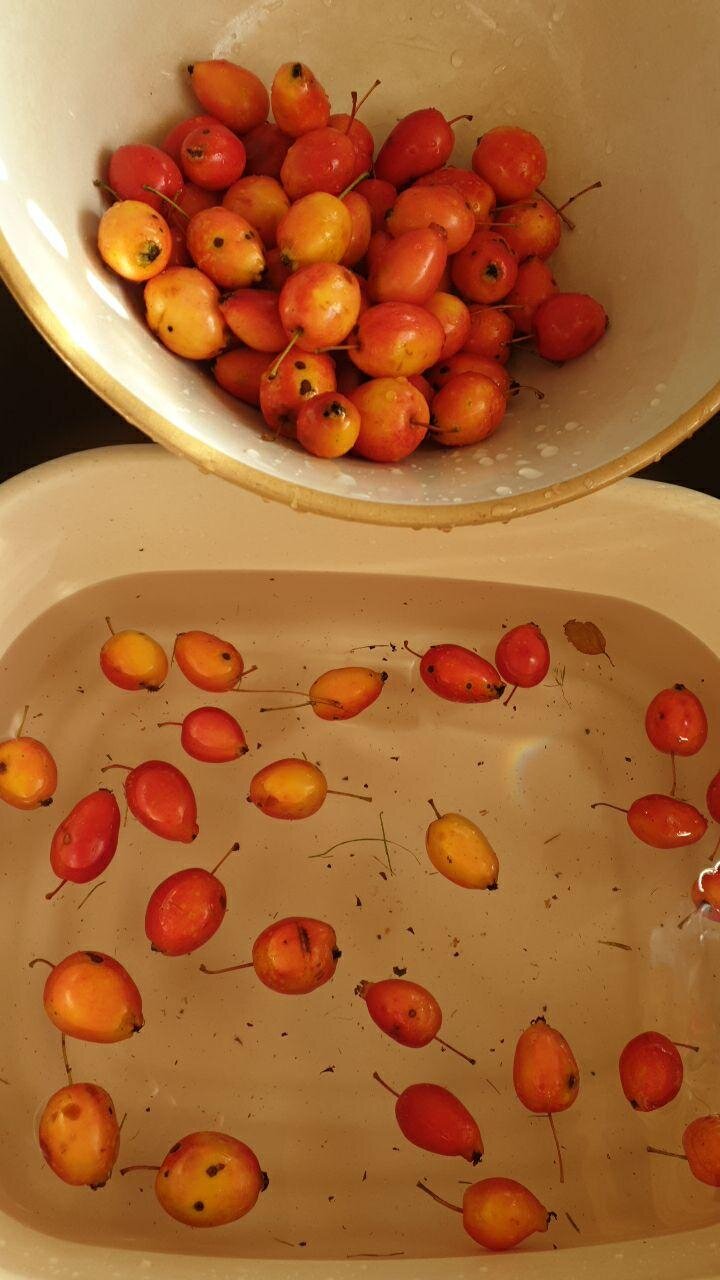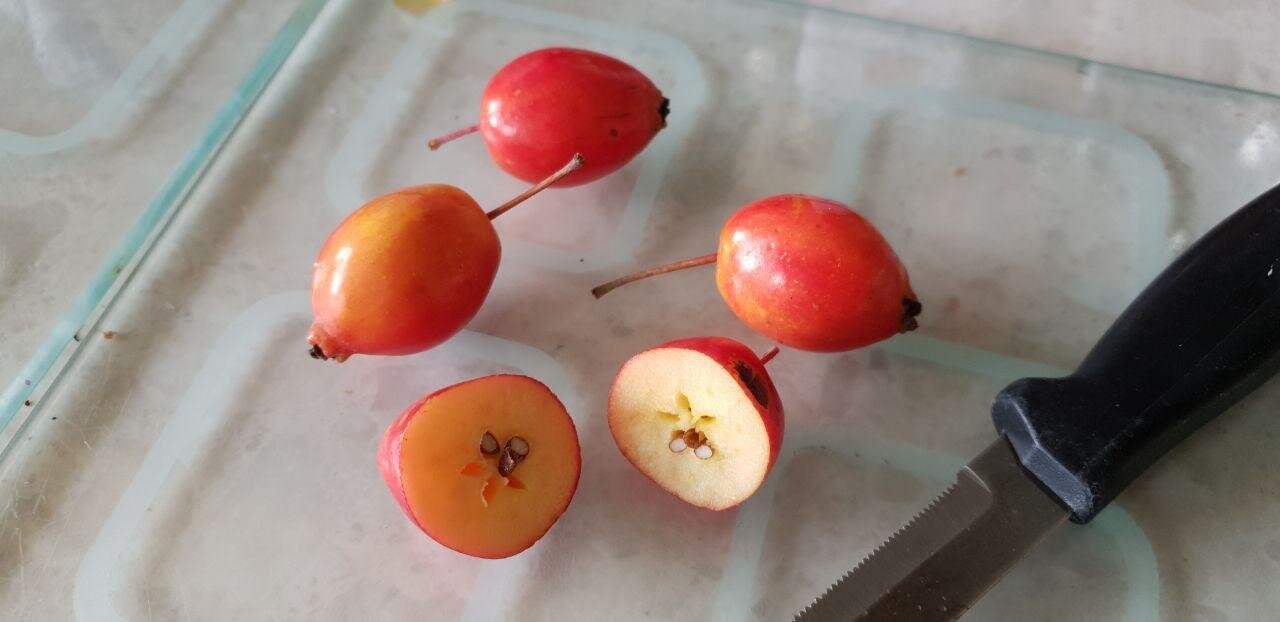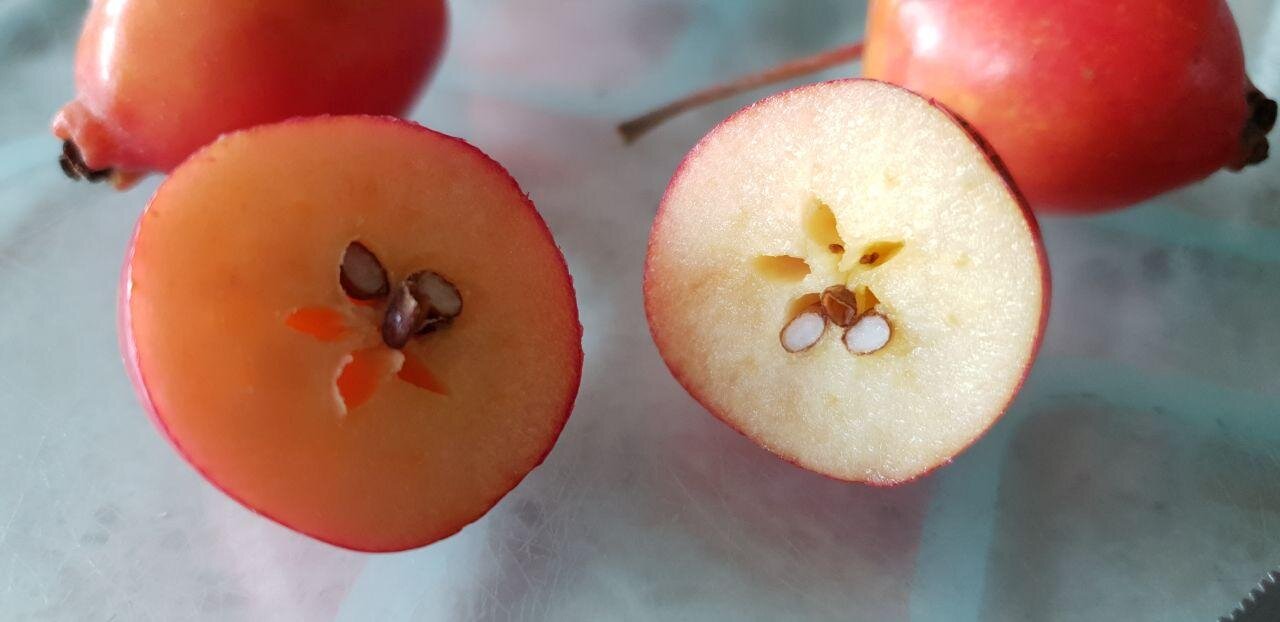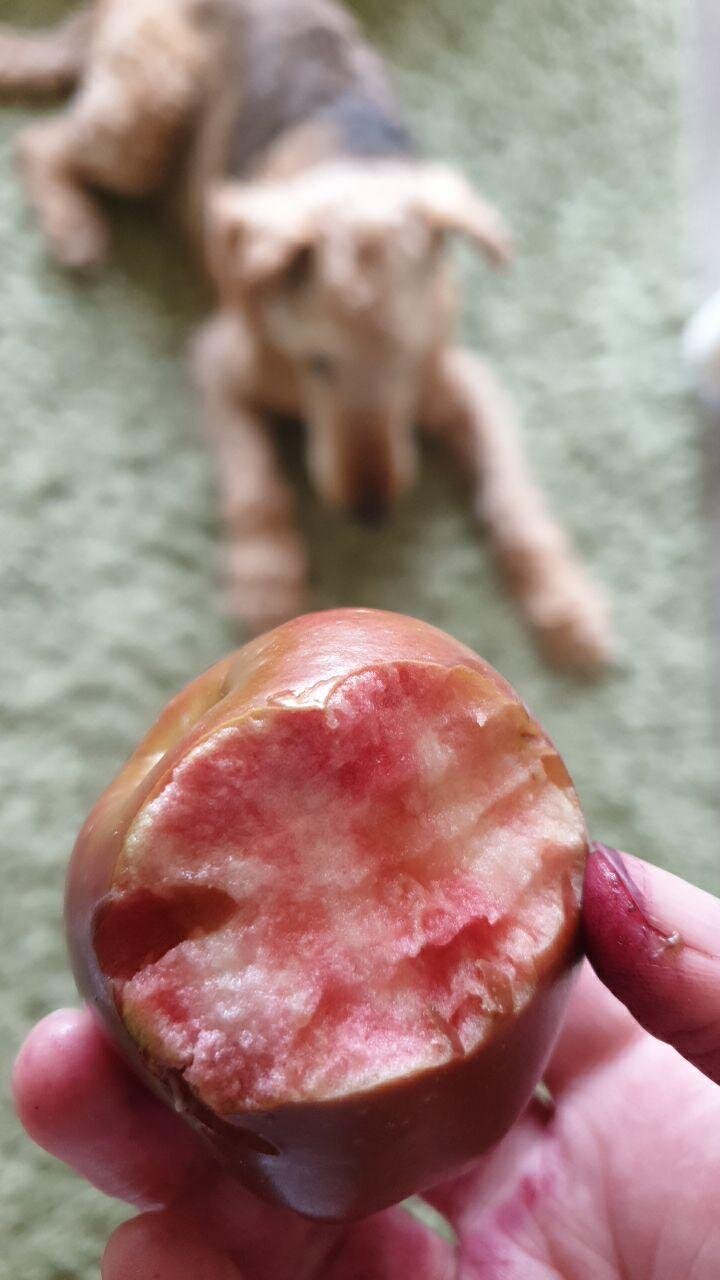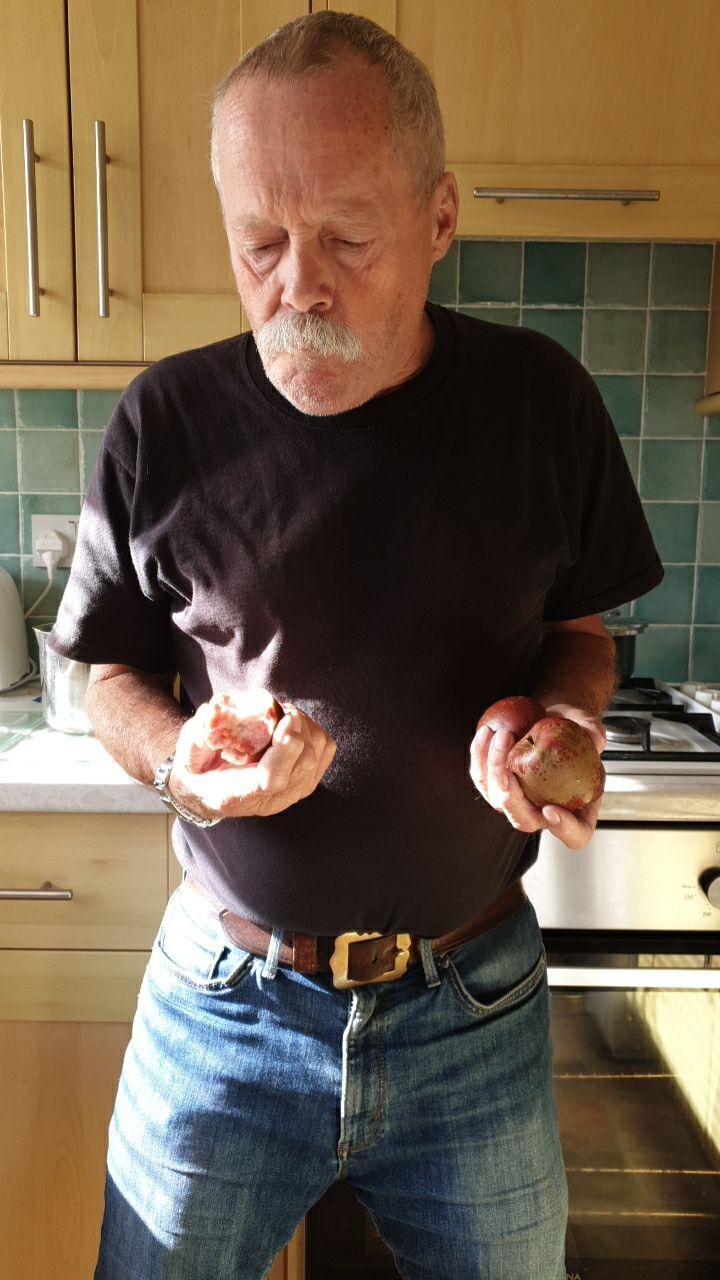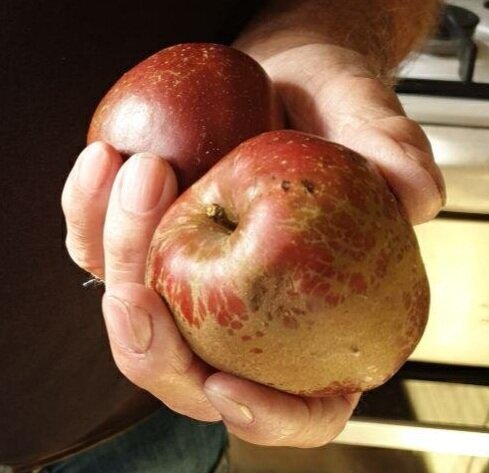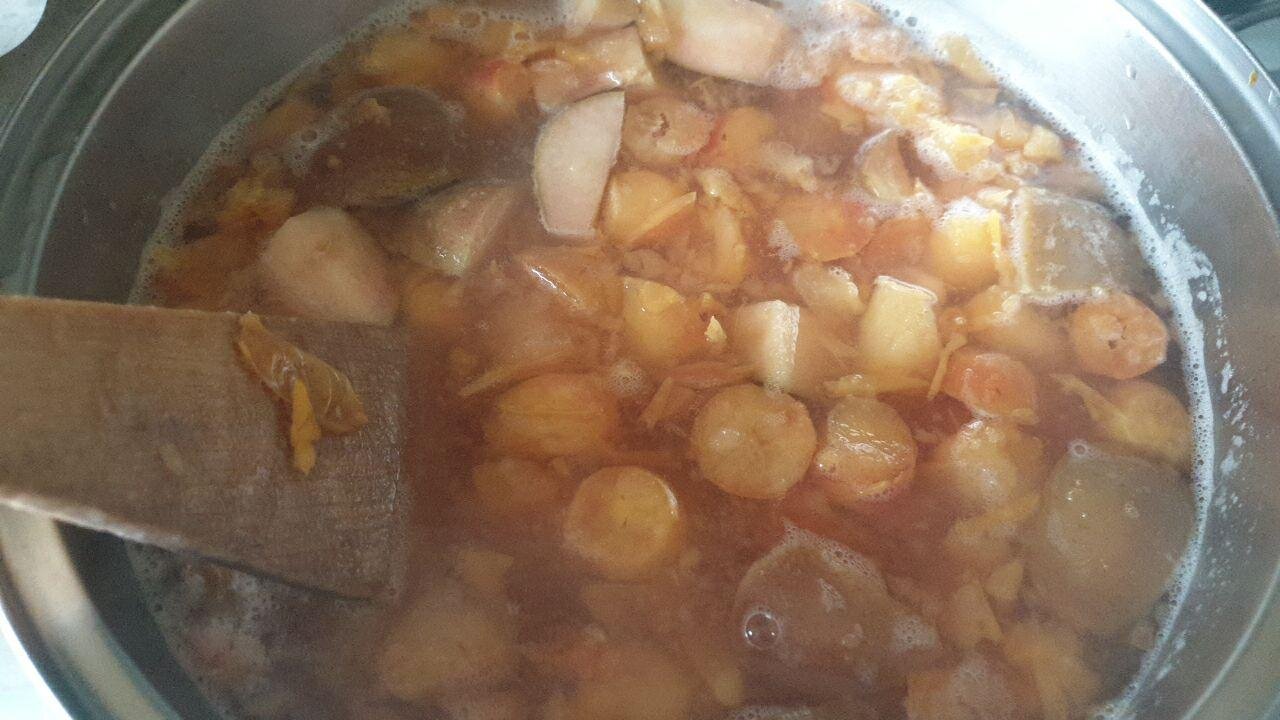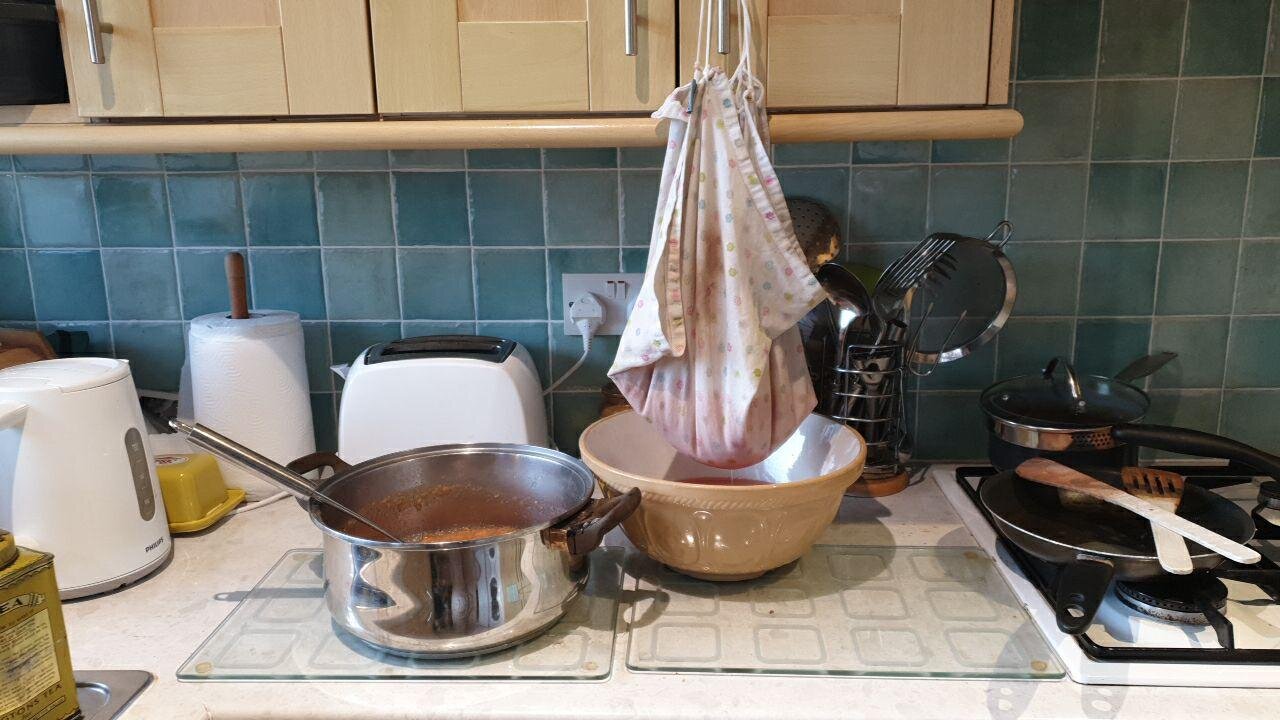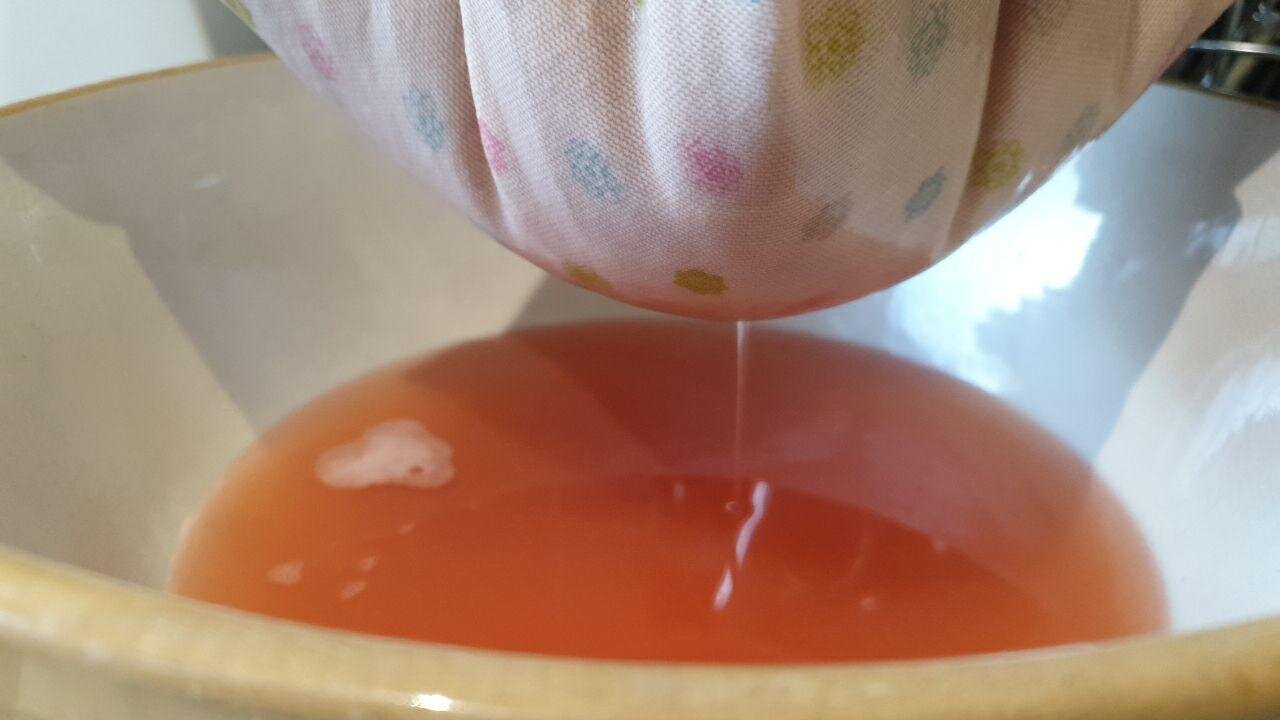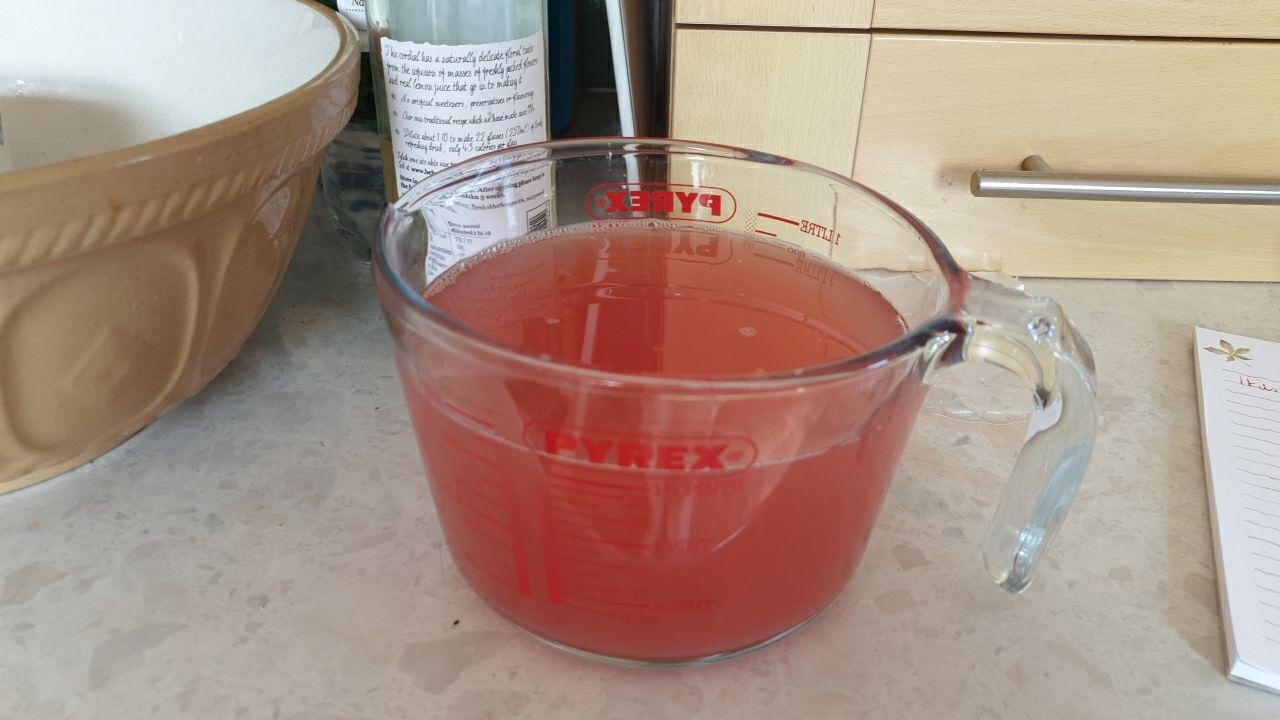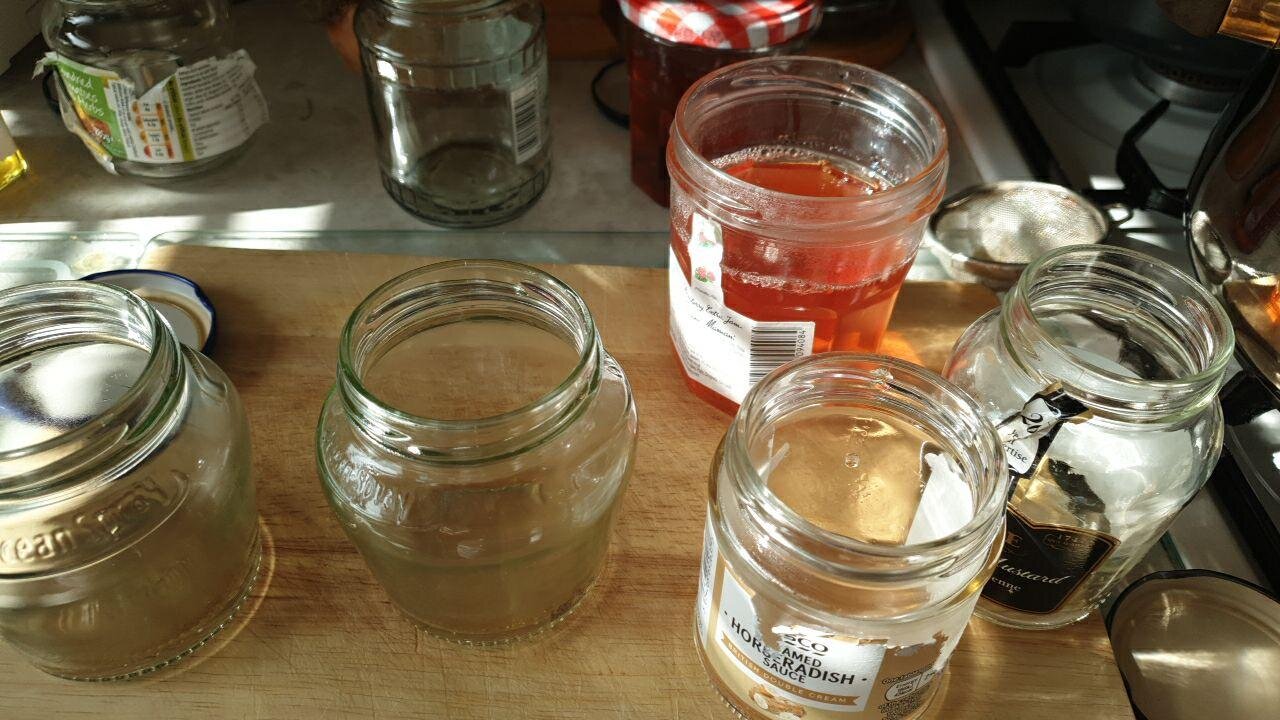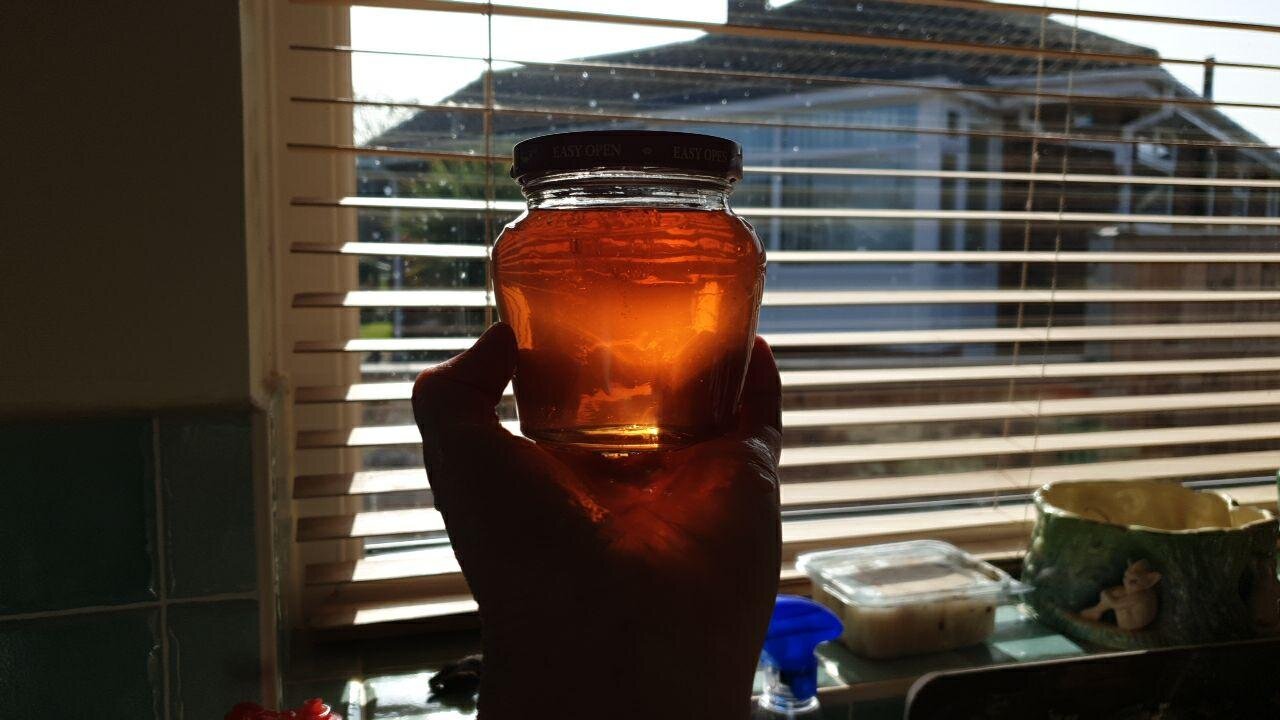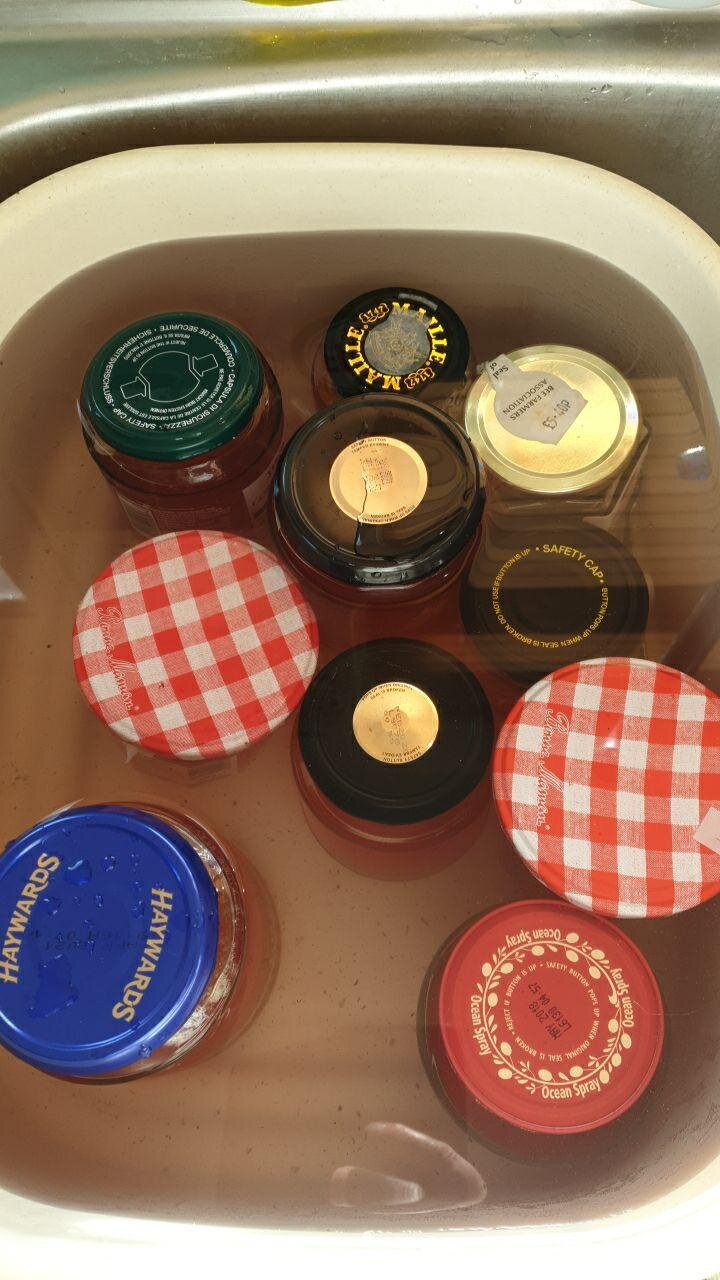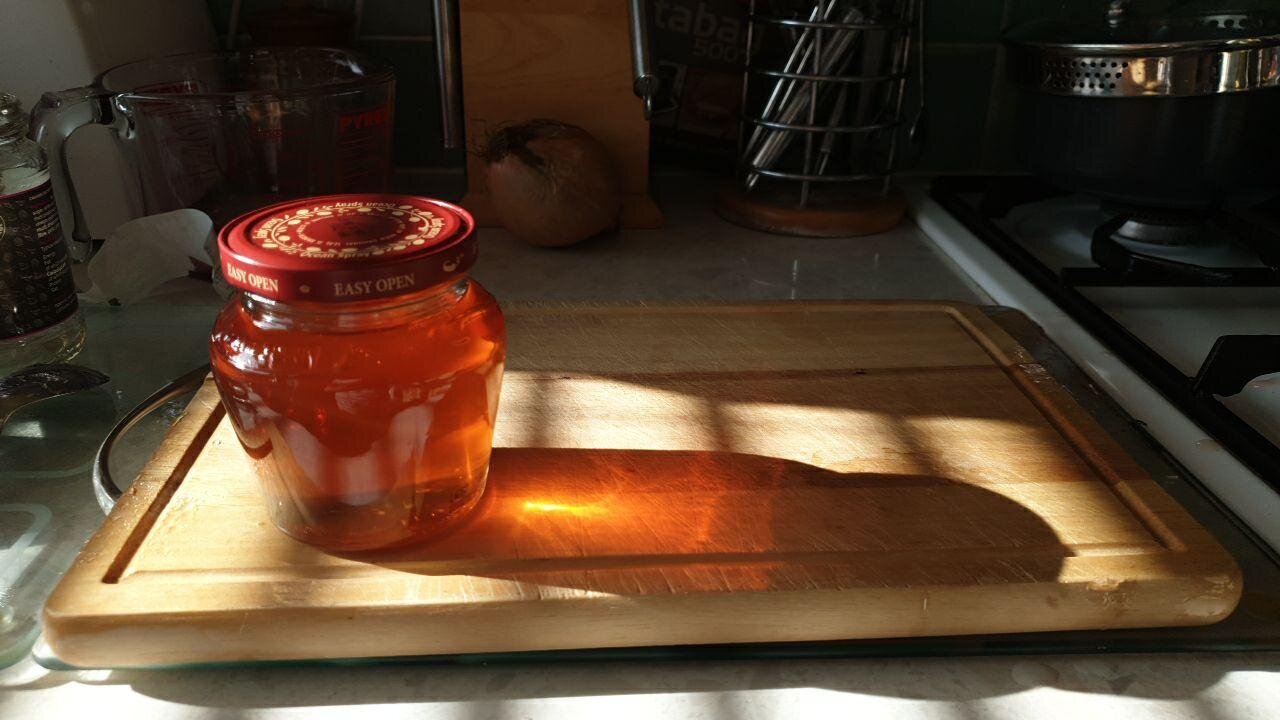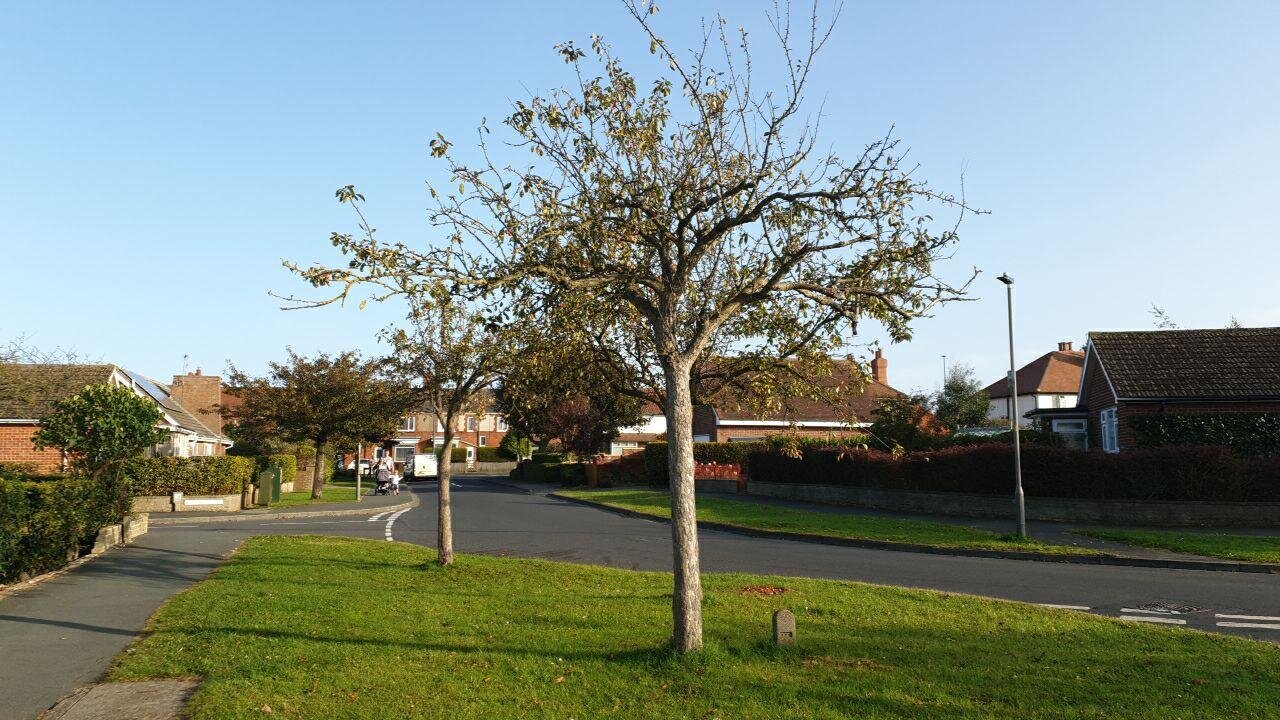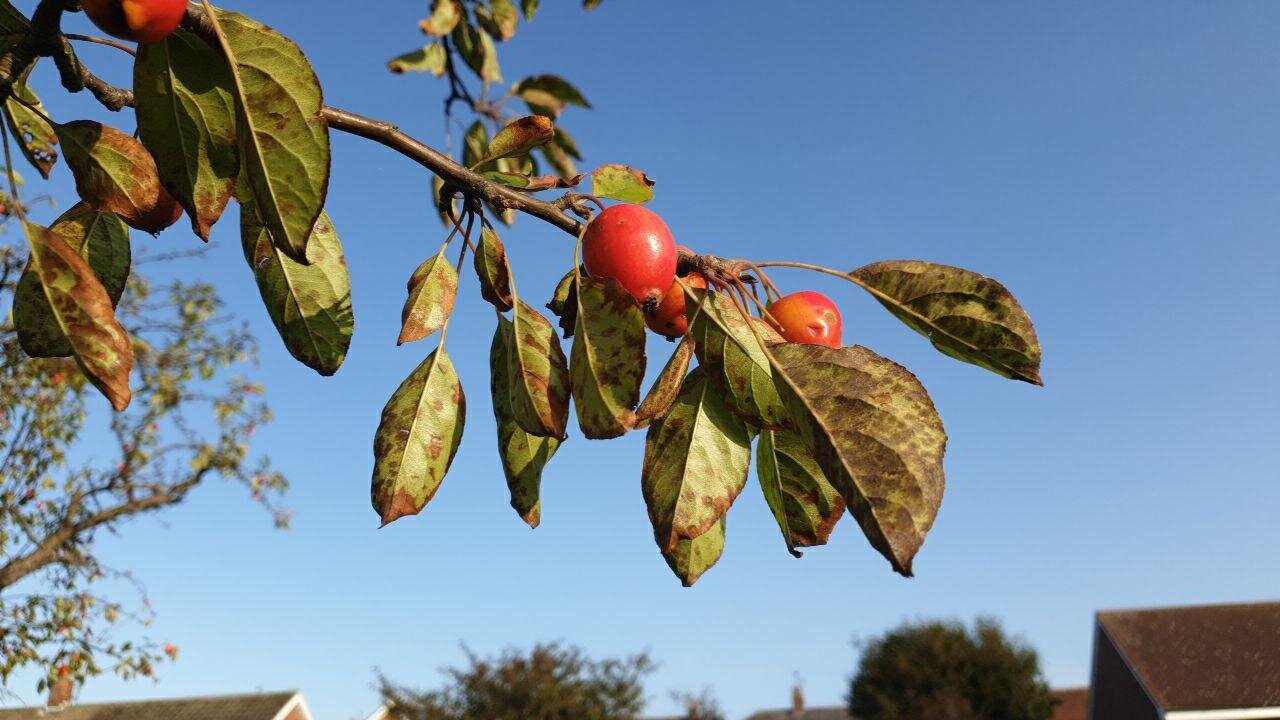The humble John Downie - ornamental crab apple tree by Becky
Hee hee hee! Sticky work, jelly making, and my poor dad has just commented on my expert ability to manage to use every single kitchen implement within reach. Ah yes, I thrive in a good old mess. I was making ‘Crab apple Jelly’ for the first time and if I can do it, so can you!
For years, I mean years, I have regularly passed three beautiful little trees planted together on the grass verge at the end of my parent’s street. Their blossom in Spring is stunning. I assumed they were some kind of cherry blossom until last week dad brought me some tiny, miniature apples and told me he’d gathered them from the grass verge under these three pretty little trees on the corner.
Windfalls - no one else wanted them and it’s seemed sad to leave them to go to waste, trampled underfoot or run over by cars. There were plenty left for the birds and other little visitors and hundreds left on their branches.
They are ornamental crab apple trees, so I decided to discover which variety and it turns out they are called ‘John Downie’ and are the easiest crab apple tree to grow and bear lots of fruit. Though they can succumb to something called ‘apple scab’ - a little dark marking on the skin - it isn’t harmful and doesn’t affect the cooking quality of the fruit. The ‘John Downie’ crab apple tree was raised in the 1870s by Edward Holmes, a nurseryman from Lichfield, England. He named it after his Scottish friend and fellow nurseryman John Downie.
In spring, these small trees have beautiful little pink buds that open into elegant white flowers around April, followed by these beautiful fruits shaped a bit like an upside down pear, in autumn. They are a favourite for making crab apple jelly because the liquid extracted has a beautiful pale pink colour. What fascinated me is that these trees self pollinate (self fertile) and if planted in an apple orchard they make excellent pollinators for any apple varieties - good to know because apple trees need to be pollinated from different apple varieties. Garden Seeker UK says ‘For instance, the pollen from one Laxton's Superb apple tree, will not pollinate a different Laxton's Superb Apple tree’. (See more here)
Thank you Auntie Joan for the photo
I love the colour of these windfall crab apples! Dad’s runner bean flowers in the background match them!
Dad also came home with these beauties, more windfalls, so I added them to my crab apple jelly. Anyone know what they are called? They’re pink inside.
crab apple jam
To make crab apple jelly took a bit of research and preparation, like raiding the cupboard and asking family and neighbours for jam jars. You’ll need a jelly cloth (not one of your mum’s best tea towels hee hee) to strain the pulp once you have washed and boiled crab apples whole for 30 - 40 minutes. So I used a clean tea towel and rigged it up so it was dangling over a huge mixing bowl and filled it with the hot crab apple pulp and left it dangling overnight. It doesn’t look very pretty but it did the job.
I was blessed with about 2 litres of beautiful pink liquid. Crab apples have pectin in them, so to make the jelly, the only other ingredient I needed was sugar. I found it is best to use 1 litre of crab apple liquid to 1 kilogram of sugar. Yes SWEET!
Instead of boiling all the liquid and sugar together in one go, it is said to do it in small batches so the pectin sets, so I did it in 2 batches. And the photo’s are my results, I was really pleased and it is really tasty.
Needless to say I spilled it and accidentally dribbled it all over, the ladle (I used to fill the jars), the pan, the worktop, cooker, and myself were all coated in sticky jam. Lots of finger licking.
I was left with 10 varying sized jars of beautiful pink, clear jelly, some of which I gave to those kind people who brought me the jars.
This morning I put the strained pulp in the compost (next time I will find a better use for it, some make it into food).
It was pretty simple.
Over the last two weeks I’ve also been making Elderberry Syrup - which is now in my parent’s fridge. It’s packed with lots of good healthy stuff and is an old traditional remedy to stave off colds and flu. On the label I wrote ‘1Teaspoon a day, whenever’ and dad’s been having a spoonful neat, whereas mum prefers it mixed with a little elderflower cordial mixed with filtered water. Here is my article about Elderberries - ‘Elderberries on Elder Road’


